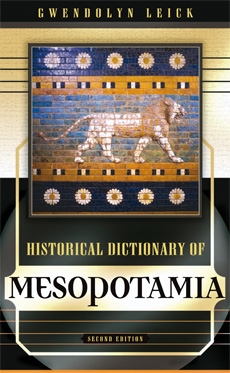|
EDITOR’S FOREWORD
Mesopotamia was one of the oldest and broadest cradles of civilization. Unlike Egypt, which was a relatively unified state, it was the site of many different city-states, kingdoms, and empires, frequently at odds with one another, and replacing one another as the locus of power— Akkad, Ur, Babylon, the Kassites, Isin, Assyria—and then tending into the more “modern” Achaemenid, Seleucid, Parthian, and Sassanian dynasties.
The transfer of power resulted from a superior capacity in warfare, not so different from our times, and the rise of great leaders such as Sargon of Akkad, Hammurabi, Nebuchadnezzar, Darius, and Alexander the Great. All the while, the Mesopotamians also are known to have been practicing the arts of peace; developing agriculture, metalworking, and trade; devising forms of writing; constructing monumental buildings; organizing an administration and bureaucracy; worshipping various gods; laying down laws; and determining who was higher and who was lower in society—again, not so different from our times. That is why Mesopotamia remains so intriguing, showing where we came from and part of how we got where we are, and maybe even giving us some insight into where we’re heading.
The message would obviously be much clearer if, like Egypt, there had been a relatively unified state rather than many statelets that tended to wipe away earlier traces left by predecessors, and if the sands of time—and the desert—had not covered over so many of their remains. Thus, what we have been able to uncover, and do know with a reasonable degree of certainty, is particularly precious. So it is nice to have much of it presented in a handy form by the Historical Dictionary of Mesopotamia.
The dictionary section helps us sort out the many city-states, kingdoms, and empires; the famous and less well-known rulers (some far from glorious); the arts of war and the arts of peace; the signs of a maturing civilization and high culture; plus aspects of everyday life, including food and drink, clothing and jewelry, housing and cities, social relations and the formation of families, marriage, and even divorce. The whole period is too complicated for a straightforward chronology, but the areas can be followed in the chronology and the rulers in Appendix 1. The bibliography is very helpful in suggesting in some detail where further readings can be found.
Writing this book, with its myriad periods and aspects, was no easy task. But it was certainly easier for someone, Gwendolyn Leick, who has already written several books on the ancient Near East and its architecture, literature, and mythology, as well as a “who’s who” and an introduction to the Babylonians. Dr. Leick has spent nearly three decades studying, lecturing on, and writing about Mesopotamia. She has also taught at the universities of Glamorgan, Cardiff, and Reading, and in London, and is a fellow of the Royal Anthropological Institute. This long and varied experience is the basis for the latest volume in the steadily growing series of Historical Dictionaries of Ancient Civilizations and Historical Eras.
Jon Woronoff
Series Editor
|
